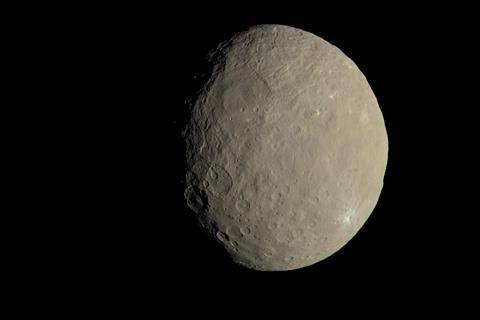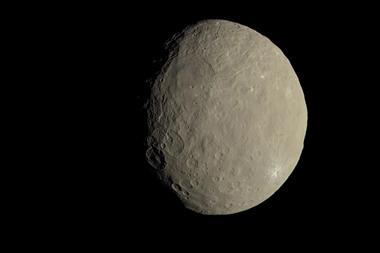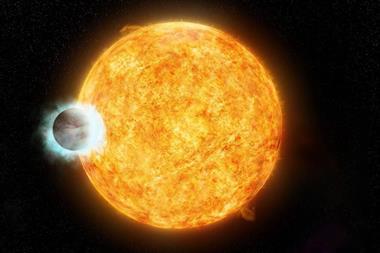Spectral signatures detected by Dawn space probe

Data collected by Nasa’s Dawn spacecraft suggests that aliphatic organic compounds are present on the dwarf planet Ceres. Although the materials were detected near the Ernutet crater, they appear to be native to Ceres rather than having come from an impacting meteorite.
At around 600 miles across, Ceres is the largest object in the asteroid belt found between the orbits of Mars and Jupiter. Previous studies have provided evidence of water ice on Ceres, as well as salts, carbonates, and ammonia-rich clays. The discovery of organic materials now shows that the dwarf planet has a complex chemical environment containing key ingredients for life.
The Dawn space probe was launched by Nasa in 2007 and was first used to study Vesta, the second largest object in the asteroid belt. It left for Ceres in 2012, where it has been in orbit for the last two years.
Organic material was detected by a visible and infrared mapping spectrometer on board the spacecraft. Although the data does not allow for identification of precise compounds, analysis revealed absorption bands characteristic of methyl and methylene functional groups. These most likely come from tar-like hydrocarbons such as asphaltite or kerite – compounds that couldn’t survive the heat generated by a meteor impact. This information, along with geological evaluations of the region where the materials were found, strongly suggests the organics originated on the dwarf planet itself.
References
M C De Sanctis et al, Science, 2017, DOI: 10.1126/science.aaj2305

















No comments yet